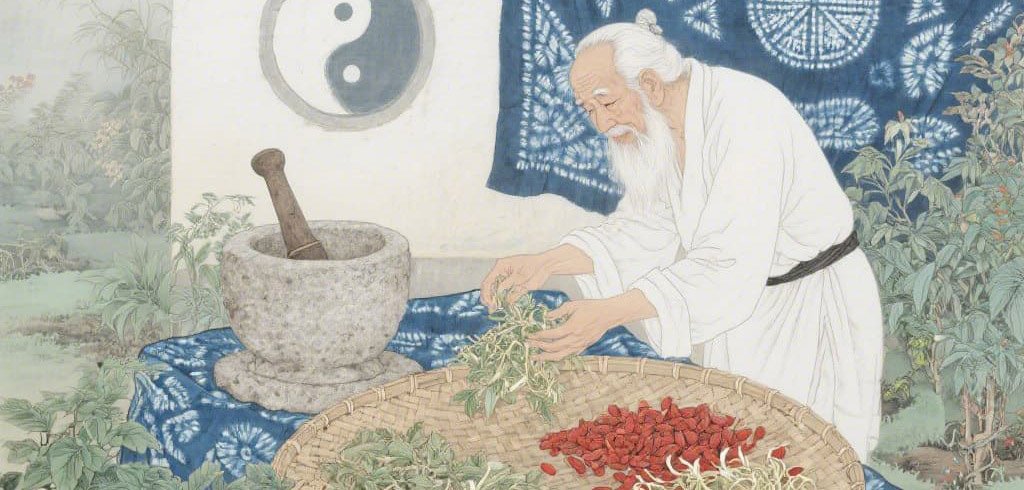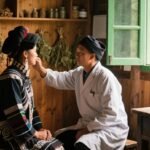Qiuna Aluo (Persistent Postpartum Lochia)
Overview
In Miao medicine, continuous postpartum lochia is called Qiuna Aluo. It arises when a woman’s constitution is weak and cold pathogens invade, causing lochia to continue unabated or trickle slowly.
In TCM, persistent lochia (chanhou elu buzhi or elu bujin) describes weak mothers or those who encounter heat or cold pathogens during delivery, leading to uterine “repository” dysfunction and lochia lasting more than ten days.
In Western medicine, prolonged lochia may result from endometritis, pelvic infection, retained tissue, uterine atony, or excessive bleeding, causing blood and necrotic tissue to discharge for 4–6 weeks.
Huhoujipeng·Miao Disease Classification
Qiuna Aluo is a minor disorder divided into two types: cold-meridian persistent lochia and hot-meridian persistent lochia.
Aiduojiang·Causes
Miao medicine attributes this condition to congenital weakness, emotional trauma, irregular sexual activity, overwork, injury, or poor diet. Key factors are maternal debility and exposure to heat or cold pathogens during delivery.
Gengduomeng·Pathogenesis
Weak postpartum qi and blood fail to govern the Chong and Ren vessels; early postpartum labor further depletes central qi, leaving vessels unsupported. Heat invasion forces blood out recklessly; cold invasion congeals blood into stasis; emotional injury causes qi stagnation and blood stasis—any of which prevents proper lochia cessation.
Diagnostic Key Points

Diagnostic Basis
(1) Lochia persists beyond two weeks, never fully ceasing.
(2) History of constitutional weakness, pathogen exposure during delivery, or prolonged labor.
(3) Exclusion of other postpartum gynecological conditions.
Related Exams
Ultrasound, gynecological exam, HCG levels, diagnostic curettage to rule out other causes.
Differential Diagnosis
Qiuniangabo (Submucosal Uterine Fibroid) also presents with prolonged postpartum bleeding. Gynecological exam or ultrasound reveals a submucosal fibroid, distinguishing it from Qiuna Aluo.
Syndrome Differentiation & Treatment
Cold-Meridian Persistent Lochia
Manifestations: Lochia for 20+ days, pale dilute discharge without odor, pale complexion, weakness, lethargy.
Meridian: Cold meridian, cold disease.
Principle: Tonify qi and nourish blood (bu qi yang xue).
Prescription & Explanation:
Jialao geque (Leonurus, yi mu cao) 15g
Wubu taoxue (Salvia root, xue ren shen) 20g
Bajiejian (Cuscuta seed, yuan si zi) 15g
Jijianuo (Wild marigold flower, yang que hua) 20g
Decoction orally.
Leonurus (yi mu cao): cold, bitter; moves blood, regulates menses.
Salvia root (xue ren shen): warm, astringent; nourishes yin, secures blood.
Cuscuta seed (yuan si zi): warm, sweet; tonifies kidney, secures essence.
Wild marigold (yang que hua): warm, slightly pungent; tonifies qi, nourishes yin, moves blood.
Hot-Meridian Persistent Lochia
Manifestations: Lochia 20+ days, dark with clots, sticky foul discharge, lower abdominal pain, flushed face, dry mouth.
Meridian: Heat meridian, heat disease.
Principle: Invigorate blood and transform stasis (huo xue hua yu), tonify qi and blood (bu qi yang xue), clear heat and stop bleeding (qing re zhi xue).
Prescription & Explanation:
Jianggeba (Bitter orange, zhi ke) 10g
Wuhoudou (Inula, guan zhong) 15g
Jijianuo (Wild marigold flower, yang que hua) 10g
Huikana (Violet, zi hua di ding) 20g
Wumiyang (Purslane, ma chi xian) 20g
Decoction orally.
Bitter orange (zhi ke): cold, bitter; regulates qi, reduces stasis.
Inula (guan zhong): cold, bitter; clears heat, detoxifies, cools blood.
Wild marigold (yang que hua): warm; tonifies qi, moves blood.
Violet (zi hua di ding): cold, bitter; detoxifies, clears heat.
Purslane (ma chi xian): cold, sour-bitter; clears heat, drains dampness, cools blood.
Prevention & Care
Rest, avoid cold, eat easily digested nutritious foods.
Moderate activity; avoid overexertion.
Regulate sexual activity.
Notes
This condition stems from postpartum qi-blood depletion, pathogen invasion, or emotional injury causing vessel dysfunction. Treatment centers on tonifying qi and blood, stopping abnormal bleeding, and restoring vessel integrity.


Leave a Reply